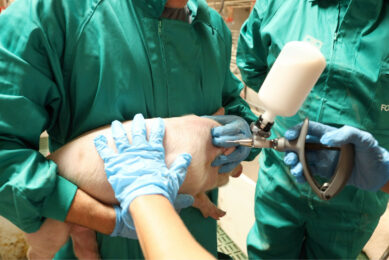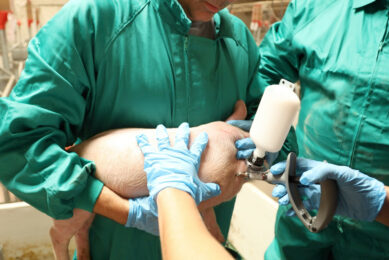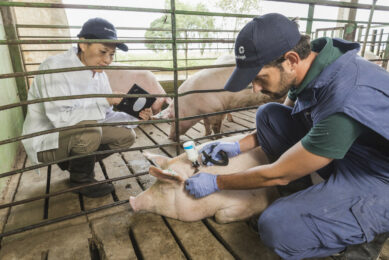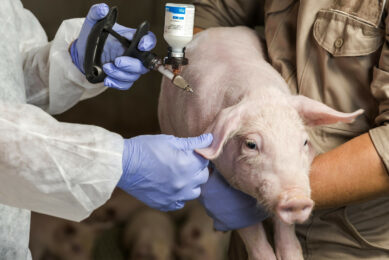New: Combining vaccination with pig identification data
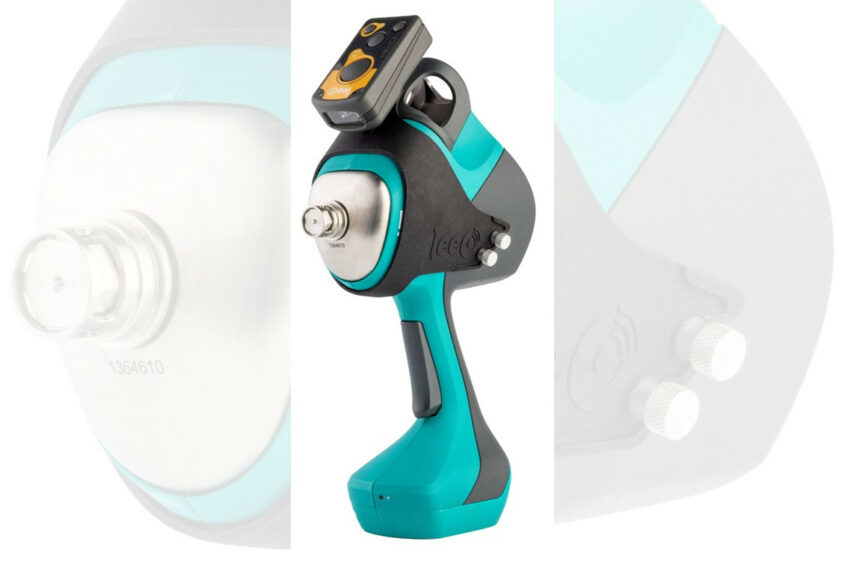
As precision livestock farming is proceeding, novel technologies continue to offer more detailed methods of capturing data of what is going on at a swine farm. For pig producers in Europe, it is now possible to administer and register pig vaccinations on animal level.
MSD Animal Health presented “Swine Protect & Connect,” the latest development at a special press event preceding this year’s European Symposium for Porcine Health Management (ESPHM), in Bern, Switzerland, on Wednesday, May 21. Essentially the launch is the latest step in integrating 2 existing advanced technologies MSD has been working wit
Smart intradermal vaccination for pigs
On one hand, the company has been promoting the needle-free intradermal vaccination device IDAL for 24 years now. By now, the device is in its 3rd generation, and offers producers the opportunity to vaccinate without the use of needles, in small, exact dosages – plus each vaccination activity is also automatically stored with metadata as vaccine batch number, location, vaccinating employee, etc.
Individual pig tracking
Individual animal tracking can be added directly to the vaccination process. Another precision technology MSD has been working with for various years, is LeeO – a smart and digital pig identification method based on ear tags, which allows not only sows but also weaners and finishers to be followed from birth to slaughter.
The novelty is that LeeO reader can now be adjusted physically onto the IDAL injector. In addition, both systems can “talk” to one another via Bluetooth. All animal and vaccination data can thus be accessed on a mobile device. That way, the animal’s personal life passport can be filled with each vaccination it received – a bonus for each producer, integrator or processor striving to optimise welfare, transparency and traceability.
In the past it was already possible to use the LeeO solutions for vaccine registration at a batch level – as from now it can be registered now per individual animal.
Even though LeeO technology is already available all over the planet, the combination of the 2 technologies is so far only available in Europe. The registration process for other regions is ongoing, said Rika Jolie, head of global swine marketing at MSD Animal Health.
New member to the pig vaccine range
The company’s vaccination range, called Porcilis, has a portfolio filled with vaccines that have been designed to be apt for use in IDAL devices – in that case the vaccine is also available in an “ID” version. For use in combination with the intra-dermal vaccination device, the vaccine has been available against Lawsonia intracellularis, PRRS virus, PCV2, M. hyo and Aujeszky’s Disease virus.
At the press event, the company also announced a new member of this family to be available within the intra-dermal, needle-free application: the Porcilis PCV M Hyo ID vaccine – consisting of a baculovirus expressed PCV2 ORF2 protein and an inactivated M. hyo component. For conventional use with needles, the combination had been available since 2015. Proudly, when speaking of vaccines, the company stated now “the big 4 for piglets” can be given with just 1 intradermal shot. After all, the new vaccine can be mixed prior to vaccinating with the company’s intra-dermal Lawsonia vaccine. In addition, when using a dual device, a concurrent shot can be given containing the company’s PRRS vaccine. The PRRS vaccine has to be administered separately as this is a modified live vaccine.
Trials of the novel PCV2-M. hyo ID vaccine in Greece
The novel vaccine was also put to the test in 9 experimental trials and 2 field trials, Dr Stephan von Berg said, technical lead at MSD Animal Health.
Researchers in Greece, supported by MSD Animal Health, even recently published results of their trials in the peer-reviewed journal Porcine Health Management in April 2025. The team concluded that vaccination had significantly reduced M. hyo like lung lesions as well as pleuritis; and it had also significantly reduced PCV2 viraemia and shedding in faeces. They also picked up on an improved average daily gain (24.5 g difference) and heavier and more homogeneous pigs at slaughter (+4.6 kg).



